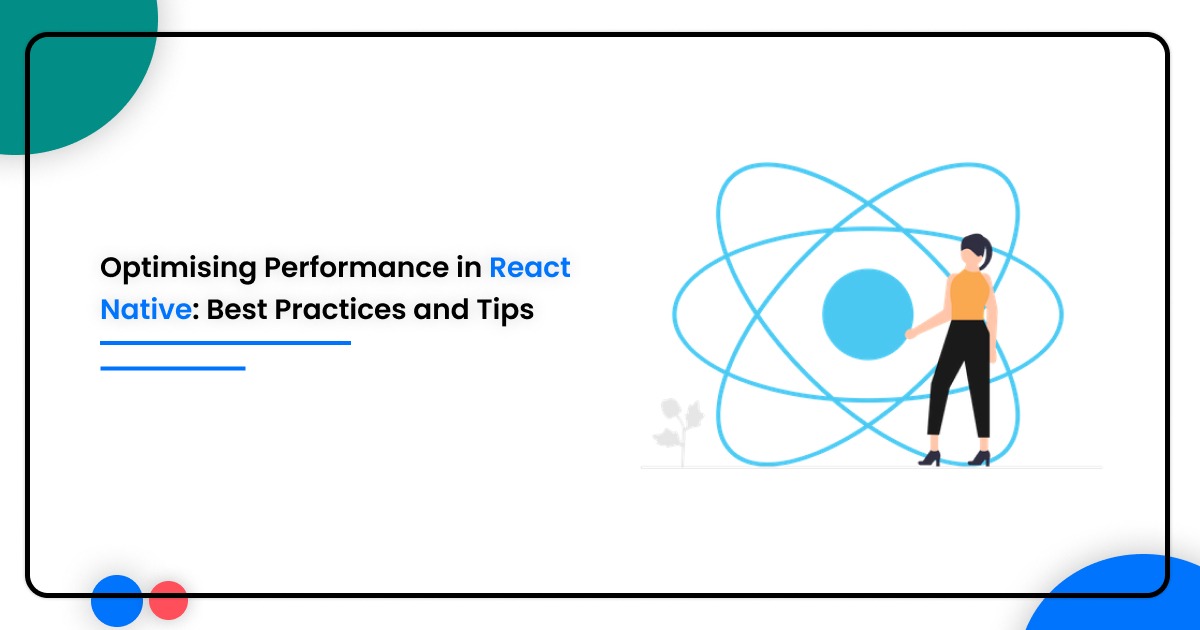React Native has gained immense popularity in recent years as a powerful framework for building cross-platform mobile applications. Its ability to provide a native-like experience using JavaScript has revolutionized the mobile development landscape. However, like any other technology, React Native applications can encounter performance issues if not optimized correctly. In this article, we will explore some best practices and tips to enhance the performance of React Native applications.
Understanding Performance Optimization in React Native
Performance optimization in React Native involves improving the speed, responsiveness, and overall user experience of mobile applications. By optimizing performance, developers can ensure that their apps run smoothly, load quickly, and consume minimal device resources. This is particularly important in the mobile environment, where users have high expectations for seamless and fast interactions.
1. Minimize Rendering with Virtualization
One key performance optimization technique in React Native is to minimize unnecessary rendering. This can be achieved through the use of virtualization techniques such as FlatList and VirtualizedList. These components efficiently render large lists by rendering only the visible items on the screen, significantly reducing the rendering time and memory usage.
2. Optimize Image Loading
Images play a crucial role in most mobile applications, but they can also impact performance if not optimized properly. To improve image loading performance in React Native, it is recommended to use progressive loading techniques, lazy loading, or even placeholder images. Additionally, resizing and compressing images to an appropriate size can significantly reduce their file size and improve loading times.
3. Use Memoization and Pure Components
React Native provides the React.memo higher-order component and PureComponent class, which can optimize rendering by preventing unnecessary re-renders. By memoizing or using pure components, only the necessary components are re-rendered when the data or props change, leading to improved performance.
4. Optimize JavaScript Execution
JavaScript execution can be a potential bottleneck in React Native applications. To optimize JavaScript execution, it is essential to avoid unnecessary computations and heavy calculations in the UI thread. Offloading intensive tasks to background threads or using Web Workers can help keep the UI thread responsive and improve overall app performance.
5. Avoid Excessive Re-renders
Excessive re-rendering can negatively impact the performance of React Native applications. To mitigate this issue, developers should identify and optimize components that re-render frequently. This can be achieved by implementing shouldComponentUpdate or React’s memo to prevent unnecessary re-renders when the component’s props or state haven’t changed.
6. Optimize Memory Usage
Efficient memory usage is crucial for the performance of any mobile application. In React Native, it’s essential to manage memory properly to avoid memory leaks and improve the app’s stability. Developers should pay attention to unmounting unnecessary components, releasing event listeners, and properly handling large data sets to optimize memory usage.
7. Use Native Modules and Optimized Libraries
React Native allows developers to leverage native modules and libraries written in Swift, Java, or Objective-C to perform complex operations or access specific device features. By utilizing native modules and optimized libraries, developers can improve performance by offloading certain tasks to the native layer, taking advantage of the underlying platform’s optimizations.
Conclusion
Optimizing performance in React Native is crucial for delivering high-quality mobile applications that meet user expectations. By implementing the best practices and tips mentioned in this article, developers can significantly enhance the speed, responsiveness, and overall user experience of their React Native apps.
From minimizing rendering with virtualization and optimizing image loading to utilizing memoization and pure components, each technique plays a vital role in improving performance. Additionally, optimizing JavaScript execution, avoiding excessive re-renders, optimizing memory usage, and leveraging native modules and optimized libraries all contribute to a smoother and more efficient React Native application.
It’s important to keep in mind that performance optimization is an ongoing process. As new updates and technologies emerge, developers should stay up-to-date with the latest practices and continue optimizing their React Native applications to ensure optimal performance.
If you’re looking to develop a high-performance React Native application, it’s advisable to seek the expertise of a reliable React Native development company. Such a company can provide you with the necessary skills, experience, and knowledge to build robust and performant mobile applications that meet your specific requirements.
Remember, optimizing performance not only enhances the user experience but also improves the overall success and competitiveness of your React Native application in the market.
Choose a trusted React Native development company today and unlock the true potential of your mobile app!
